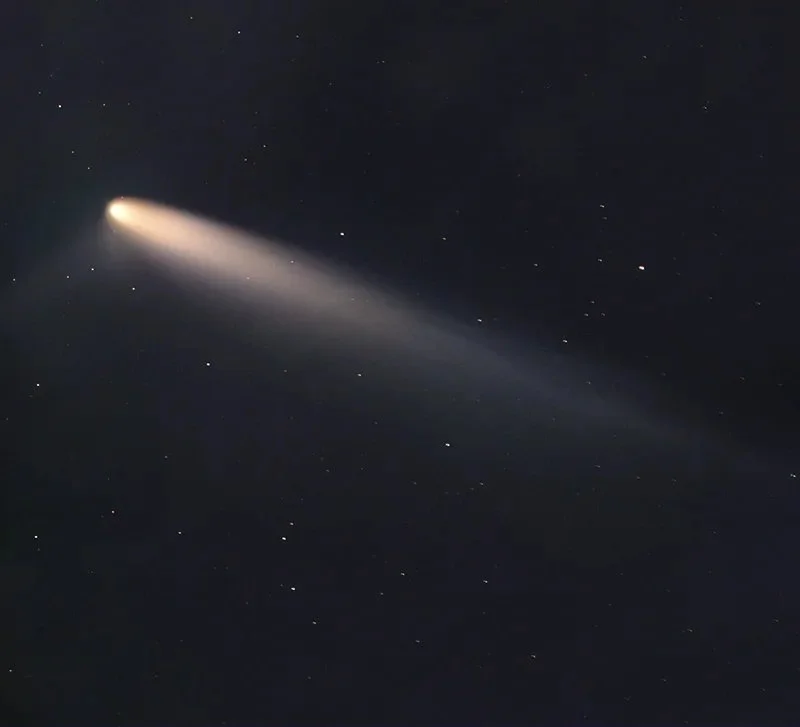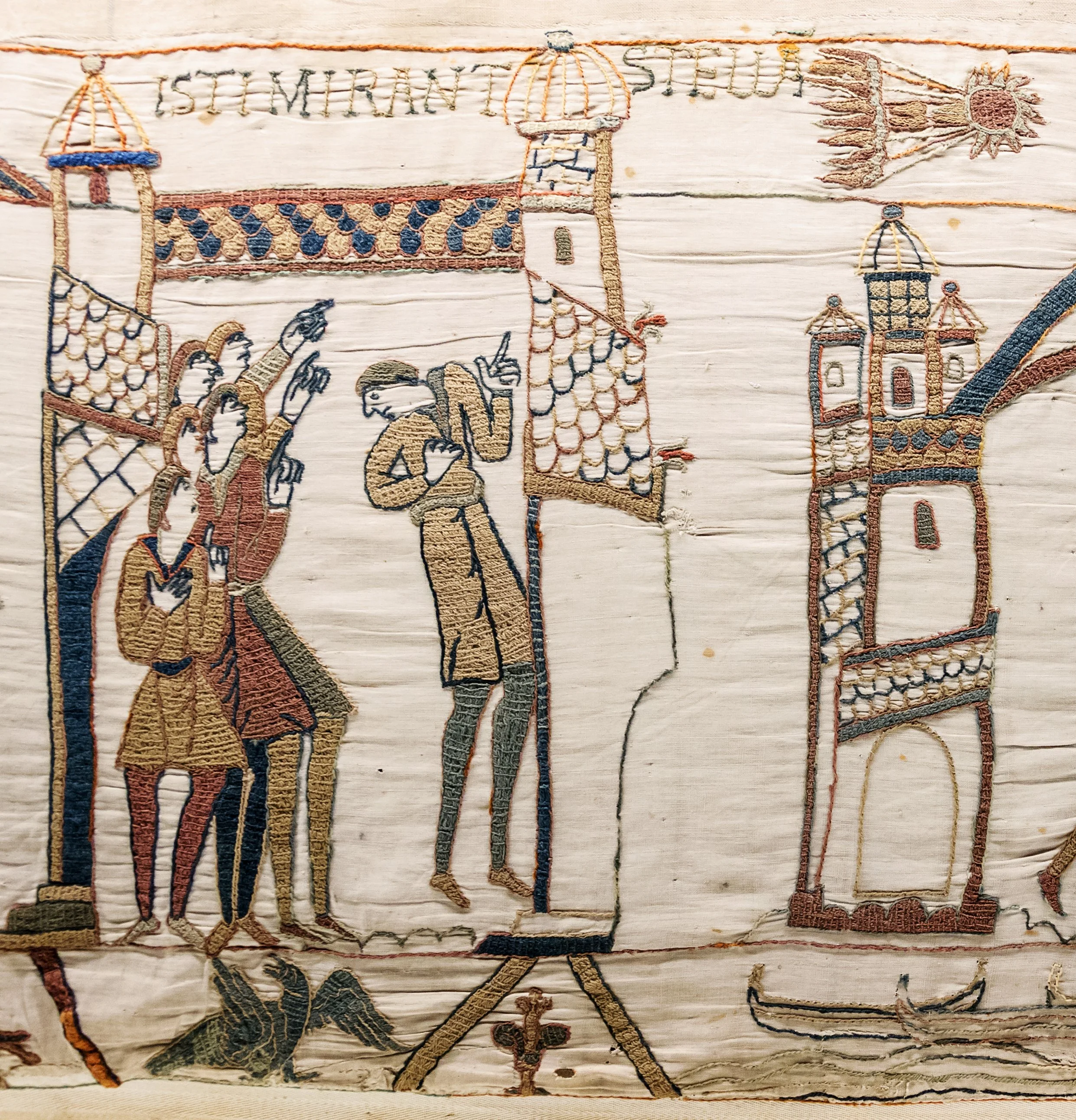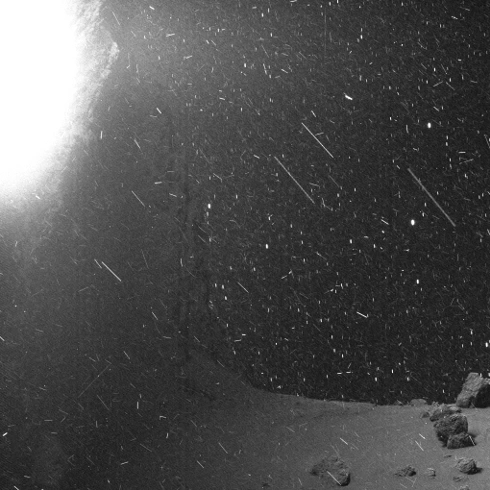Comet Tsuchinshan-ATLAS and Our “Responsibility to Awe”
By: Catherine Maggiori
Synopsis: This month at SAGANet, we’re looking back at the brightest comet to appear in our skies since 1997 and how this cosmic visitor can bring us all a little more insight and joy.
Author info: Dr. Catherine Maggiori is an astrobiologist and microbiologist. You can find her at the bench, lurking on Twitter, or at the climbing gym.
As 2024 draws to a close, I’d like to do a little retrospective on one of the best sky sights this year (and in terms of comets, in the last 20+ years): Comet C/2023 A3 (Tsuchinshan–ATLAS).
Comet Tsuchinshan-ATLAS captured on September 22, 2024 with 12 minutes of exposure through a 12-inch telescope by Gerald Rhemann (via Astronomy Magazine).
First observed in early 2023 in separate detections from the Purple Mountain Observatory (aka Tsuchinshan) and the Asteroid Terrestrial-impact Last Alert System (ATLAS), Tsuchinshan-ATLAS is a long-period comet probably originating from the Oort Cloud. With an orbit of at least 80 000 years (potentially even millions of years), Tsuchinshan-ATLAS reached perihelion on September 24, survived its solar transit, and made its closest terrestrial approach on October 12 at 44 million miles away.
In early-mid October, Tsuchinshan-ATLAS rose above the western horizon in the twilight sky. At its peak apparent magnitude of -4.9 on October 9 (for comparison, Sirius has an apparent magnitude of around -1.46), Tsuchinshan-ATLAS was the brightest comet we’ve seen since 1997, visible even with the naked eye in some areas. With a 130 000 mile-wide coma and 18 000 million mile-long main tail, Tsuchinshan-ATLAS also exhibited a rare “anti-tail”: a second, sunward-pointing cometary tail.
A comet’s regular tail is a streaming trail of dust and gas as a result of outgassing and volatilization from solar radiation; it thus points *away* from the Sun. Conversely, an anti-tail points *towards* the Sun, a result of Earth passing through the comet’s orbital plane, and traces the comet’s previous path through space.
Both of Tsuchinshan-ATLAS’ tails are visible in this photo from NASA’s “Astronomy Picture of the Day” on October 21, 2024 (credit and copyright to Brian Fulda).
People have tracked comets for probably as long as we’ve been looking up at the sky; records of comet observations are thousands of years old and comets themselves were generally viewed as signifying some kind of calamity or ill tiding. For instance, the famous Halley’s Comet appears in our sky every 75 years or so and was first observed by Chinese astronomers in 239 BCE. Its advent in 1066 CE, which coincided with the Norman conquest of England, was said to portend doom for the Anglo-Saxon King at the Battle of Hastings.
Halley’s Comet is depicted in the upper right corner of this portion of the Bayeux tapestry, a 70-metre long embroidered cloth that portrays William the Conqueror’s triumph over the English, constructed during the 11th century CE.
Obviously, comets are not actually bad omens or signifiers of future catastrophe, but that doesn’t relegate them to simple flying glaciers, leaving snow and ice particles in their wake (although that’s still pretty cool). As remnants from the beginnings of our Solar System, comets are galactic travelers carrying glimpses into the past.
Comets are relatively unchanged from their initial formation during accretion some 4.6 billion years ago. Studying comets could give us an idea about the processes that formed our world and humans have (so far) visited 8 comets in our Solar System, including 1 successful landing
The Philae lander from the European Space Agency’s Rosetta mission made the first cometary touchdown on 67P/Churyumov–Gerasimenko (67P) in 2014, gathering stunning images and taking spectral measurements of 67P’s surface and tail.
This gif was created by Twitter user @landru79 using still images captured by Rosetta. From the ESA’s senior advisor for science and exploration, Mark McCaughrean: “Pretty wild 😵 Lovely stack of images from the latest #Rosetta OSIRIS image release. My guess is that this is dust quite close to the spacecraft as it moves by, giving the illusion that it's "snow" falling on Comet #67P kilometres away in the background. Cool though 👍”
I was lucky enough to observe Tsuchinshan-ATLAS with a pair of 8x40 binoculars on October 14 in my backyard in Washington, DC. I’d spent a couple of weeks at that point attempting to catch a glimpse of this cosmic ship passing in the night, with no luck. It was too bright and early in the evening, or Tsuchinshan-ATLAS was too low in the horizon from my vantage point, or poor visibility prevented any stargazing.
But that night, I was lucky. I remember spotting Tsuchinshan-ATLAS’ distinctive tail shortly after sunset over the Western horizon and was thrilled. I know some folks in DC and around the world were able to view the comet with their naked eyes (check out this phone photo from @Plateau_Astro in Montreal) and even more spectacular images were captured with telescopes and proper cameras.
As of writing (December 2024), you can still spot Tsuchinshan-ATLAS with a good telescope in the Aquila constellation. But Tsuchinshan-ATLAS has a hyperbolic orbit, meaning it will likely be flung from our Solar System and never return.
Its visit and my fortuitous viewing on October 14 feel significant, in a way; I ran inside to insist that everyone come out and look, eliciting a vocal burst of transcendence (aka plenty of outbursts of “ooh!” and “aah!”) from each of us as we took turns with the binoculars. But then the moment was over and we waved goodbye to our brief celestial visitor.
Earth’s encounter with Tsuchinshan-ATLAS was no less profound for its brevity. The natural world contains countless beauties and marvels; our interactions with and observations of them inspire humanity and esteem the world around us. Rebecca Elson, a brilliant astronomer and writer, describes these feelings in her poem “We Astronomers”:
We astronomers are nomads,
Merchants, circus people,
All the earth our tent.
We are industrious.
We breed enthusiasms,
Honour our responsibility to awe.
But the universe has moved a long way off.
Sometimes, I confess,
Starlight seems too sharp,
And like the moon
I bend my face to the ground,
To the small patch where each foot falls,
Before it falls,
And I forget to ask questions,
And only count things.
Viewing Tsuchinshan-ATLAS (and writing this article!) have allowed me to honour that responsibility to awe. I hope I can carry that wonder and curiosity for natural profundity into 2025.
I wish the same for you all. To a bright and happy new year!




